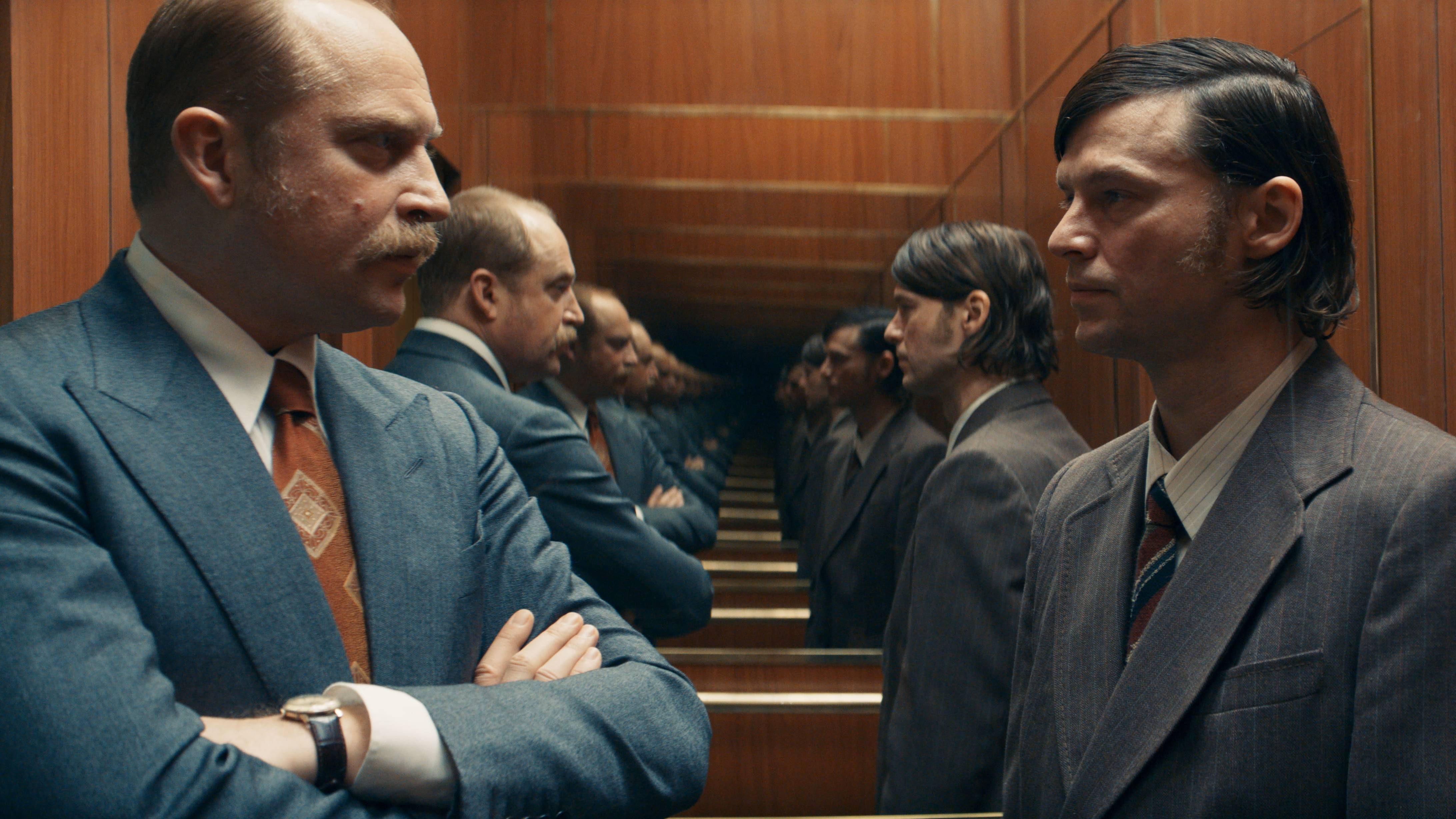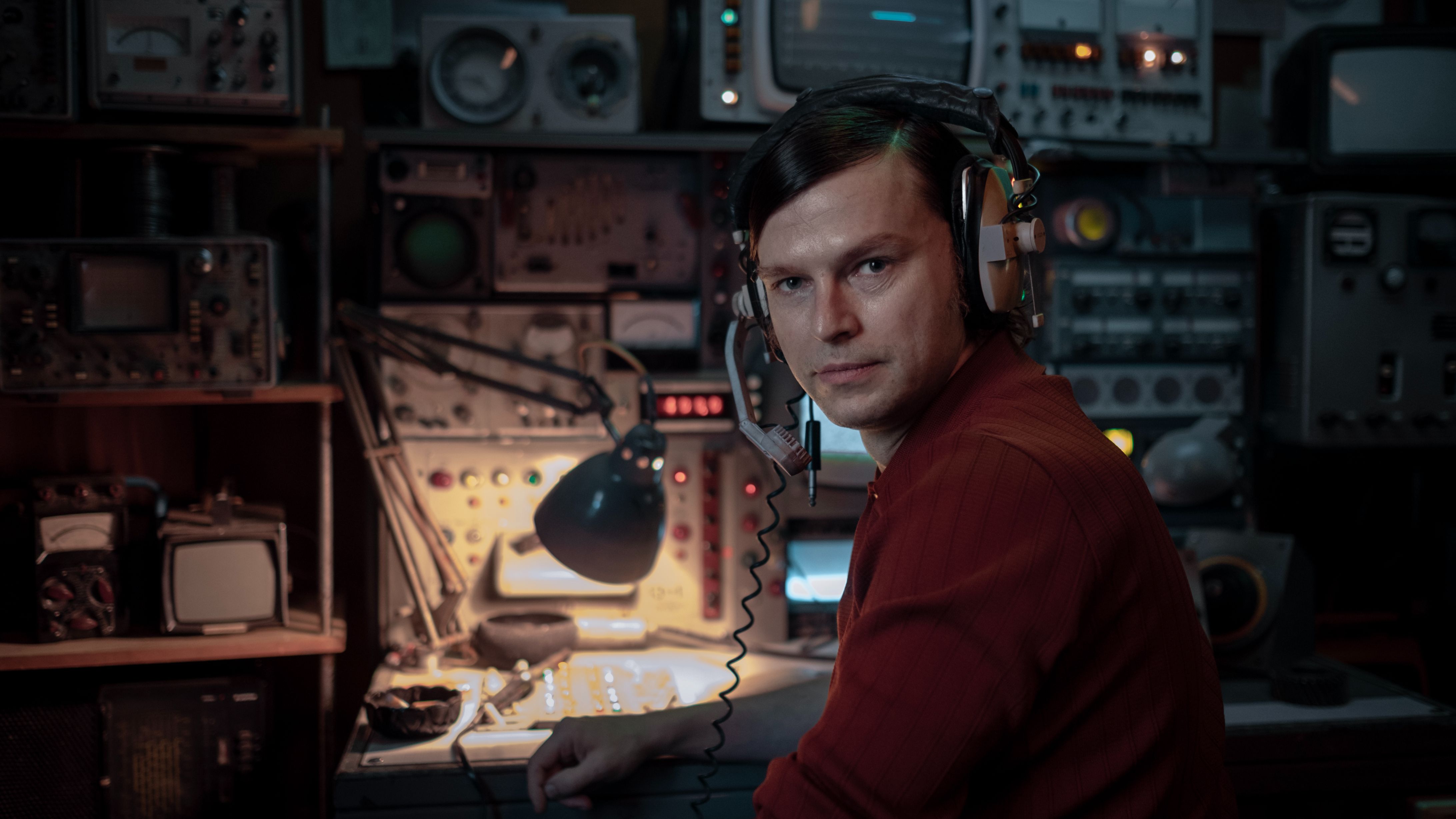Created by Kasper Bajon, Netflix’s Polish sci-fi drama ‘Project UFO’ unravels into a finale that is as haunting as it is quietly devastating. There’s no overt violence, no graphic bloodshed, and yet, by the time the credits roll, both the central characters and the entire country are left irrevocably scarred. What begins as a slow-burning mystery surrounding a possible alien sighting in a quiet village evolves into something far more unsettling, probing deep into collective paranoia, disillusionment, and existential dread. The show steadily peels back layers of ambiguity, only to deliver a gut punch of a conclusion that turns everything on its head. With such themes simmering beneath the surface, the series invites—if not demands—introspection! SPOILERS AHEAD.
Project UFO Recap
Set against the tumultuous backdrop of early 1980s Poland, ‘Project UFO’ begins with a cryptic warning: “The events we are about to show really—or rather, could have—happened.” In a nation ruled by party secretaries and on the edge of political transformation, strange and inexplicable phenomena start surfacing near the Polish-Soviet border. At the heart of the narrative is Janek “Jan” Polgar, the charismatic yet troubled host of ‘Close Encounters,’ a late-night television show dedicated to reporting alleged UFO sightings and extraterrestrial activities nationwide. When he receives a bizarre letter from a woman claiming a person called Józef Kunik has been abducted by green creatures emerging from a lake, he is drawn into a tangled mystery that soon escalates beyond his imagination.

Enter Zbigniew Sokolik, an eccentric electronics repairman and self-proclaimed UFO expert whose theories include underwater alien civilizations and mysterious submersible crafts known as the USOs (Unidentified Submersible Objects). Though initially mocked by Polgar on national TV, he is soon brought into the fold when more eyewitness accounts and physical evidence point to a chilling truth beneath the surface of Lake Krywe. As the witness, Kunik undergoes lie detector tests and recounts being taken aboard a strange vessel, and the narrative deepens with questions concerning hallucinations, mind control, and even divine visions. Meanwhile, a young girl named Sara—the daughter of a police officer named Julia Borewicz—claims to have seen the same aliens, hinting at a larger pattern of contact and secrecy.
Throughout the investigation, Polgar finds himself at odds with both the government and his colleagues. Personal betrayals, media censorship, and political tensions weave through the backdrop as the Communist regime begins to leverage the paranormal claims for its own opaque agenda. As state authorities step in, the search for truth becomes increasingly dangerous. ‘Project UFO’ blends science fiction, political thriller, and Cold War paranoia to create a chillingly atmospheric story where the line between reality and illusion remains disturbingly thin. With layered characters and a growing sense of dread, the series asks whether the real threat lies in outer space—or much closer to home.
Project UFO Ending: Does Kunik Really See the Aliens? Why Does Sokolik Hypnotize Him?
The question of whether Józef Kunik truly sees the aliens sits at the murky crossroads of belief, propaganda, trauma, and scientific curiosity—a space where ‘Project UFO’ deliberately lingers. From the moment he is introduced, the narrative walks a tightrope between fact and fabrication. His account is vivid and unwavering: non-human creatures abduct him and transport him into their unidentified flying object. He passes a lie detector test, has no apparent reason to lie, and remains eerily consistent in every retelling. So why does doubt still persist? Kunik is both a classic “everyman” and an allegorical figure. His father’s past visions of the Virgin Mary introduce a legacy of extraordinary, yet possibly delusional, experiences.

This familial history casts a shadow over Kunik’s reliability, hinting at a psychological or even genetic predisposition. However, all the theorizing is upended by a shocking revelation: Zbigniew Sokolik, Kunik’s most ardent supporter, has orchestrated the entire narrative. Throughout the series, he defends the old man with near-religious fervor. He records interviews, challenges skeptics, and insists that every detail is true. But in the final episode, the façade collapses. It is revealed that the letter, which initially convinced the world of Kunik’s encounter, is fabricated by Sokolik himself. The supposed memories? Implanted through hypnosis.
Hypnosis, in this context, is a metaphor more than a method. After being publicly ridiculed on Jan Polgar’s popular show ‘Close Encounters,’ Sokolik, once a respected researcher of extraterrestrial life, becomes obsessed with proving his theories. The photograph he presents—allegedly showing lights from a USO (Unidentified Submersible Object)—is dismissed as a hoax. Humiliated, Sokolik turns not to science but to performance. Kunik becomes his canvas, molded under hypnosis into the perfect witness: earnest, emotional, and believable. Using the old man, Sokolik tries to establish that the USOs exist without fearing getting ridiculed on national television.
For a moment, Sokolik succeeds. The world begins to believe. But when he finally attempts to tell the truth, to reveal that Kunik never saw anything, it’s too late. The lie has metastasized. Media outlets spin their own versions, political bodies adopt the narrative, and the myth is now a state-sanctioned truth. What began as a personal act of vengeance becomes a tool of mass manipulation. In one of the show’s most chilling scenes, the party secretary insists on hypnotizing Kunik to see if his revelations are actually true. However, this time, the procedure takes place under strict government oversight.
The message is clear: control the narrative, and you control reality. The rogue scientist uses Kunik and shows that the truth is not what it is but what is allowed to be believed. Ultimately, ‘Project UFO’ doesn’t ask whether the old man has really seen the aliens. It shows why Sokolik needs the country to believe that Kunik has seen them.
Does Sara Borewicz Really See the Aliens?
Sara Borewicz’s claim of seeing aliens is shrouded in ambiguity, much like the series’ broader treatment of extraterrestrial phenomena. Rather than presenting her visions as definitive proof of alien contact, the show invites viewers to question what is real, what is imagined, and what is influenced by personal trauma and political context. She is the daughter of Sokolik, a fanatical “ufologist” determined to prove that aliens exist, particularly those believed to reside underwater. While Kunik undergoes hypnosis to uncover supposed memories of alien contact, Sara is notably exempt from this process. Her recollections are presented as unfiltered, which initially lends them a certain credibility.

However, the series subtly suggests that Sara’s encounter with the alleged extraterrestrial life may be less about real aliens and more about distorted perceptions of authority and trauma. For example, one of the aliens Sara draws bears a suspicious resemblance to the Prime Minister. This detail hints that her “alien” sighting may, in fact, be a symbolic representation of political fear or familial pressure rather than a literal extraterrestrial being. Living in 1980s Poland—a time of martial law, propaganda, and pervasive paranoia—Sara’s subconscious might have been shaped by images of control and oppression.
The delusions of Sara’s father, the government’s manipulation of alien narratives, and the unresolved loss of her uncle all contribute to the filter through which she sees the world. Moreover, Sara’s story becomes a tool for others. Politicians, media outlets, and even family members manipulate her testimony to serve their own ends, whether to gain attention, justify beliefs, or find emotional closure. Yet, despite all these layers of doubt, the series never fully dismisses the possibility that Sara may have genuinely seen something unexplainable. Maybe she did encounter extraterrestrial beings—perhaps not in the traditional form, but through a brief, real moment of contact that was misunderstood or misrepresented by those around her.
This theory explains Sara’s ability to recall unique details without external prompting. In a world where truth is constantly obscured by ideology and emotion, it’s possible that she, a child caught between delusion and discovery, may have had a legitimate experience that is overshadowed by the noise of adult agendas. In the end, ‘Project UFO’ uses Sara’s story not to confirm or deny the existence of aliens but to explore the very human tendency to impose meaning on chaos. Her visions reflect a deeper alienation—from truth, family, and society itself. Whether literal or symbolic, Sara’s encounter remains one of the show’s most haunting enigmas, leaving us with the question: is believing in aliens stranger than believing in the systems that govern our lives?
What is the Utilitarian State Occupation? Why is it Implemented?
In ‘Project UFO,’ the Utilitarian State Occupation (USO) is a fictional regime imposed in Poland during a reimagined version of the early 1980s, drawing direct parallels to the real-life martial law era. However, instead of citing political unrest or foreign threats, the authoritarian government in the series uses an alleged alien invasion as the official justification for the USO. This bizarre yet calculated narrative reframes a historical period of oppression through a satirical sci-fi lens, exposing the absurdity and danger of authoritarian control masked as national defense. The USO is declared by a military regime led by a general who closely resembles Wojciech Jaruzelski, the real-world figure who oversaw martial law in Poland.

In the show, the supposed alien threat is entirely fabricated or exaggerated—an elaborate hoax engineered to suspend civil liberties, justify curfews and mass arrests, and silence the pro-democracy movement. Protesters, journalists, and critics of the regime are branded “alien collaborators,” turning paranoia into policy and weaponizing fear to maintain political dominance. At its core, the USO is implemented as a smokescreen for deeper systemic failures. The government faces spiraling inflation, food shortages, and public discontent, yet instead of addressing these issues, it opts for theatrical suppression.
By manufacturing an extraterrestrial crisis, the regime diverts attention from its economic collapse and bureaucratic ineptitude, creating a unifying but false enemy to rally the nation behind. This mirrors real-world tactics where regimes exaggerate threats, be they foreign or internal, to justify authoritarian rule and crush dissent. The media plays an essential role in enforcing the USO. Characters like Polgar and Wera, journalists operating within a corrupted system, choose to echo the state’s propaganda rather than challenge it. Whether out of fear, ambition, or cynicism, they help blur the line between truth and fiction, reinforcing the alien narrative and intensifying public fear.
This dynamic critiques how the media, when compromised, can become a tool of oppression, manufacturing consent through repetition and spectacle. Beyond its political context, the USO functions as a chilling metaphor. By branding citizens as “aliens,” the state effectively dehumanizes its own people, turning neighbors into enemies and dissenters into threats. It illustrates how regimes weaponize the concept of “othering” as a tool of control, casting political opponents as inhuman or dangerous to justify their violent repression. The alleged alien threat becomes a stand-in for any marginalized or oppositional group the government seeks to erase from public life.
Moreover, the government’s decision to take Kunik into a so-called “safe house” only showcases the inescapability of its grasp. His life is irreparably damaged, a fate his innocent soul cannot even begin to comprehend. While martial law in real history was framed as a necessary evil to prevent civil war, ‘Project UFO’ dramatizes the absurdity of this logic by replacing political threats with alien ones. This shift sharpens the show’s critique of authoritarianism, illustrating how power can corrupt not only institutions but also the very perception of reality.
‘Project UFO’ shows the Utilitarian State Occupation as a narrative device that strips authoritarianism of its pretense. It exposes how easily fear, media complicity, and national insecurity can be weaponized to suppress civil society and how fragile democracy can become when truth itself is under siege.
How Did Sokolik’s Brother Die?
Sokolik’s brother, Antek, dies under tragic and misunderstood circumstances in ‘Project UFO,’ and his death becomes an important thread of the show’s emotional and thematic structure. The official cause—accidental electrocution and drowning during an electrofishing expedition—is revealed much later in the series. Until then, Antek’s disappearance is cloaked in uncertainty, giving rise to elaborate conspiracies and fueling Zbigniew Sokolik’s spiral into delusion and obsession. Antek was participating in an electrofishing operation—an otherwise routine method for studying fish that turned deadly due to a malfunction or miscalculation.

Antek’s body was never found, creating a vacuum where grief was quickly replaced by speculation. With no closure, Sokolik, already a believer in extraterrestrial phenomena, clung to the idea that underwater aliens or the so-called USOs had abducted his brother. This wasn’t just a refusal to accept loss; it was a desperate reconstruction of reality shaped by overwhelming grief and the human instinct to make sense of senseless tragedy. The turning point comes when Julia Borewicz finds Antek’s wooden hand at the bottom of the lake in which he drowned. This single, haunting object—devoid of myth, full of meaning—confirms that his death was the result of a tragic accident, not an alien abduction.
This discovery shatters the illusion Sokolik has built and offers the family a moment of closure. The wooden hand becomes a striking symbol in the show: an anchor of truth in a sea of deception. Antek’s death reframes Sokolik not just as a conspiracy theorist but as a man lost in mourning. His transformation from grieving brother to the public menace is steeped in the show’s broader commentary on how easily grief can be radicalized, how trauma can be politicized, and how the truth can be buried under spectacle and fear. His eventual downfall and arrest signal the unraveling of a belief system built on denial and myth, one that ultimately collapses under the weight of a single, undeniable fact.
Antek’s fate is the emotional engine of the series—a quiet tragedy twisted into something grander and more grotesque by forces both personal and political. His story explains how people process loss and how, without answers, they sometimes create their own reality, no matter how extraordinary.
Read More: Where is Netflix’s Project UFO Filmed?


